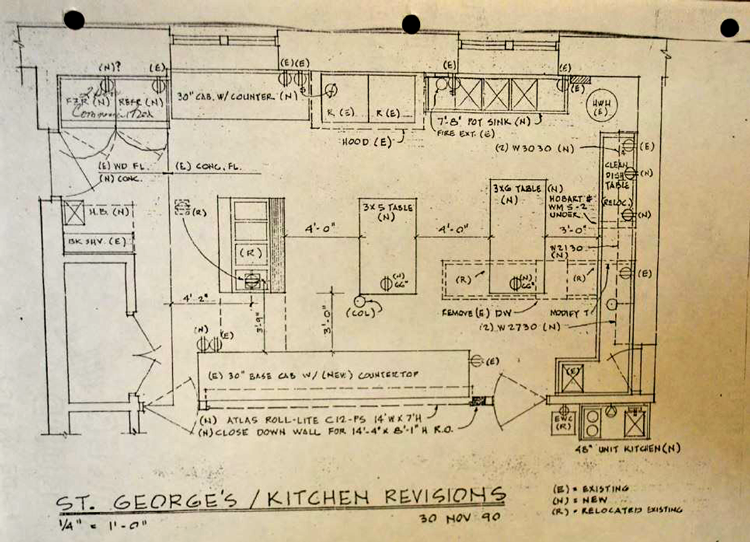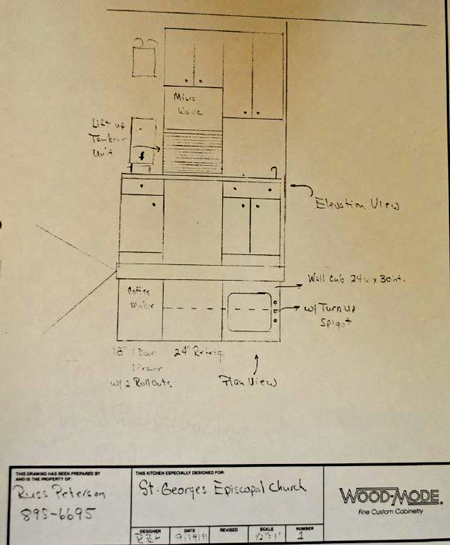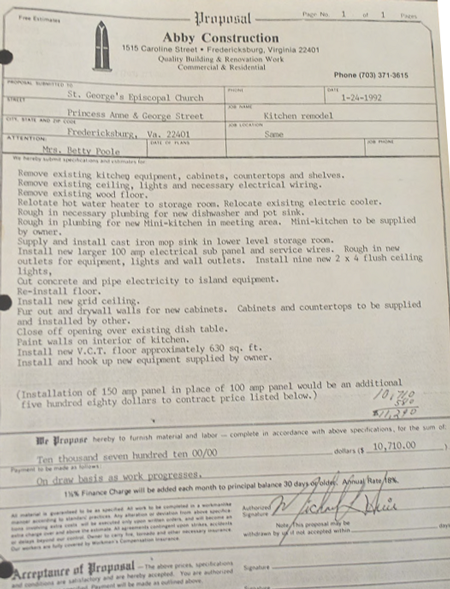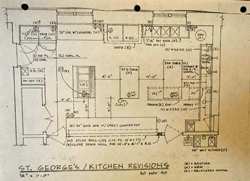“Gentlemen if the ladies decide they want a new kitchen, they will have it.” – Attributed to Mary Freeman Funk by Betty Poole.
The kitchen project took place in 1992 in the midst of a church dealing with a budget crisis. The amazing fact is not that the ladies did the work on their own to raise the money, plan for a contractor but that the Vestry accepted it almost as it was presented in the midst of financial problems.
In Dec, 1991 Treasurer announced that there wasn’t sufficient cash to pay the diocesan pledge and that income would be $10,000 less than budgeted. The Finance Committee proposed a budget for 1992 provided two alternatives to cut the diocesan budget in half and would make the director of music part time as 1/3 time or to fund the Assistant rector only through August, 1992. The Vestry decided to undertake more study of the financial situation and open up lines to the congregation and explore ways to keep both position full time. The ideal budget was short by $39,000. In the next month, the congregation rallied provided an additional $16,000 along with cuts in non-staff positions allowed both to be full time in 1992. The Vestry decided in Jan., 1991 to keep staff salaries at the same level,
The kitchen was the bright spot at the Congregational meeting. In January 1992 Betty Poole reported at the Congregational meeting when the focus was on budget cut that the ECW had raised $25,169 which would permit them to purchase new appliances and cabinets. They lacked money for installation which they were looking to the Vestry to provide.
The following were plans in the Vestry minutes



Poole reported in a February Vestry meeting that 110 communicants had given money for the kitchen. (By comparison the 1991 pledge year had 198 pledges). The women basically had received contributions from 1 or every 2 pledgers. The projected cost of the project was $33,190. At that point they had collected $25,429. Another fund raising letter was mailed to reduce the gap of $7,762. In a motion the Vestry asked the ECW to finalize the specifics of the renovation and to fill out the details particularly on the floor and report back the next month as well as find a contractor with a fixed price contract.
The Executive Committee of the Vestry met with the rector and were willing to spend $500 for an architectural and engineering inspection to ensure that the proposed renovation would fit in with plans for a more extensive renovation (which became AIM2000). They recommended a loan of $4,000 from the Preservation Fund and a gift of $4,000 from the Quenzel fund. The ECW would not have to pay back not more than 50% of its annual budget yearly to the Preservation Fund. The Quenzel fund was a gift.
Betty Poole reported in Feb. to the Vestry that they favored Abby Construction as the contractor. Abby would remove the existing kitchen equipment, wood floor and rough in new plumbing, provide a new electrical sub panel as well as install new equipment (dishwater, pot sink among others). The proposed cost was for $11,240

By that time $26,000 had been raised. The Vestry agreed with the contractor and the additional funding of $8,000.
The project began in April, 1992. A problem in an inadequate sized sewer line was discovered in May in the early stages of construction. There was a 1” line. The city wanted a 3” line and the decision was to modify this for 2”, financed $1,000 from ECW and $2,400 from the Preservation fund which was approved by the Vestry.
Charles Sydnor noted that the project was complete by October when he came back from sabbatical. As he wrote in a newsletter“It is great to enjoy a beautiful new kitchen”
The kitchen provided benefits that year for the bazaar. Monies from that event were used to reduce the loan from the Preservation Fund
While the kitchen was complete, the parish’s cash flow problems continued. In a Dec. 1992 Vestry meeting Treasurer Tom Embrey reported there were about $20,000 to $25,000 in expenses that the church could not pay from 1992 receipts.
The kitchen renovation lasted for about 30 years until increasing use beyond what the women imagined in 1992 required a new renovation.
